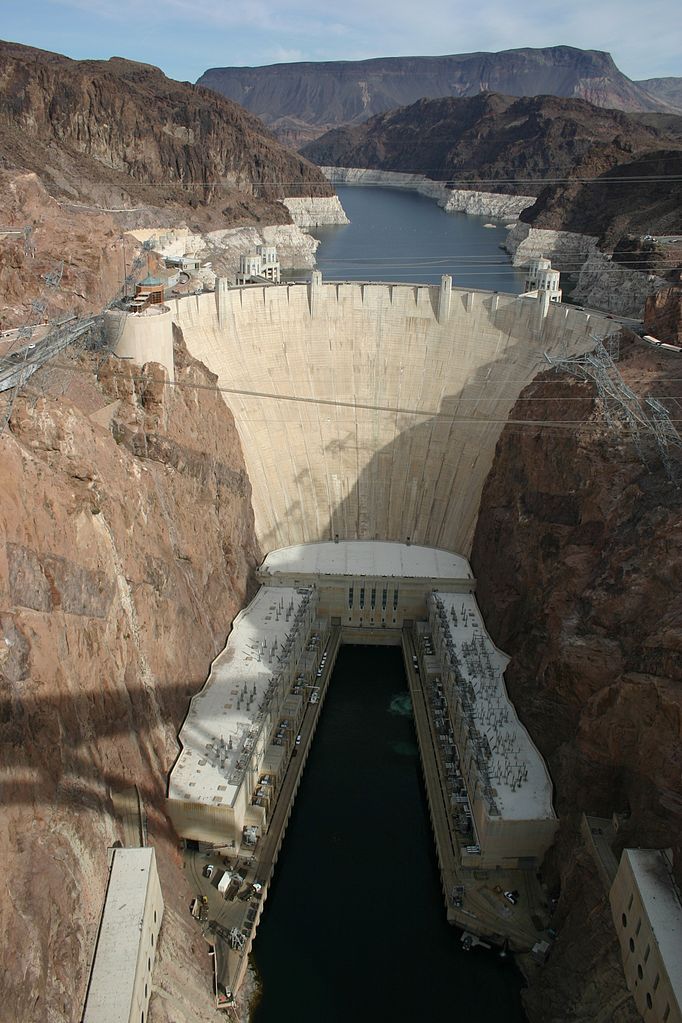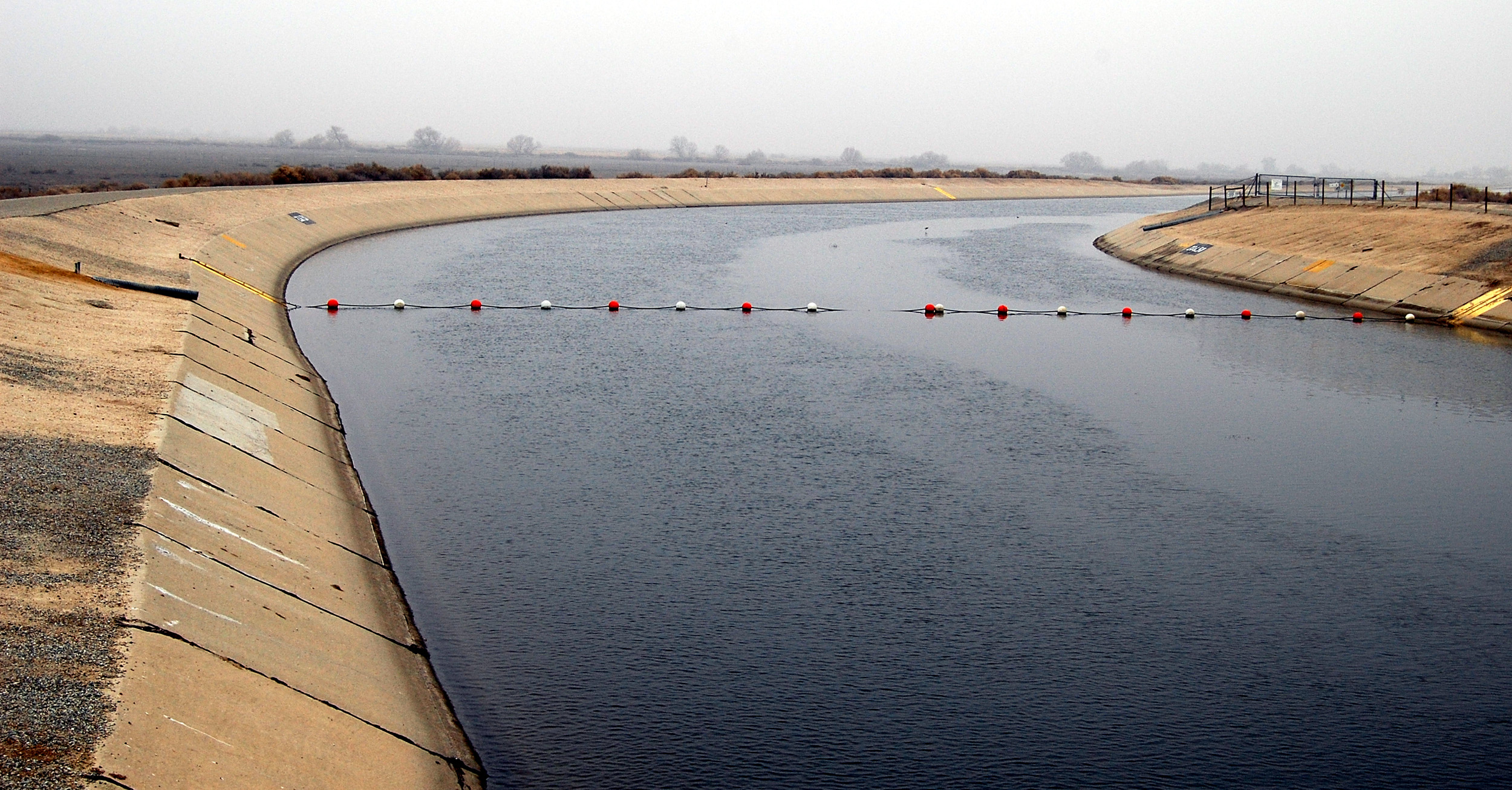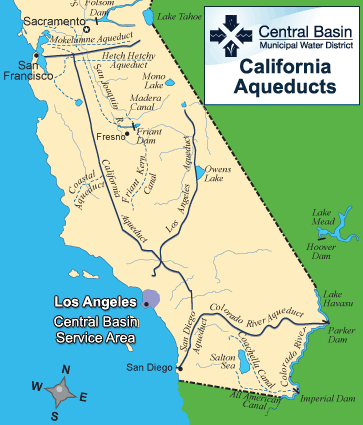| << Chapter < Page | Chapter >> Page > |

The current and future water crisis described above requires multiple approaches to extending our fresh water supply and moving towards sustainability. Some of the longstanding traditional approaches include dams and aqueducts . Reservoirs that form behind dams in rivers can collect water during wet times and store it for use during dry spells (see [link] ). They also can be used for urban water supplies. New York City has a large number of reservoirs and controlled lakes up to 200 km away to meet the water demands of its large population. Other benefits of dams and reservoirs are hydroelectricity, flood control, and recreation. Some of the drawbacks are evaporative loss of reservoir water in arid climates, downstream river channel erosion, and impact on the ecosystem including a change from a river to lake habitat and interference with fish migration and spawning. Aqueducts can move water from where it is plentiful to where it is needed (see [link] ). Southern California has a large and controversial network of aqueducts that brings in water from the Sierra Nevada Mountains in the north, the valleys in northern and central California, and the Colorado River to the east (see [link] ). Aqueducts can be controversial and politically difficult especially if the water transfer distances are large. One drawback is the water diversion can cause drought in the area from where the water is drawn.



One method that actually can increase the amount of fresh water on Earth is desalination , which involves removing dissolved salt from seawater or saline groundwater. There are several ways to desalinate seawater including boiling, filtration, electrodialysis, and freezing. All of these procedures are moderately to very expensive and require considerable energy input, making the produced water much more expensive than fresh water from conventional sources. In addition, the processes create highly saline wastewater, which must be disposed of. Desalination is most common in the Middle East, where energy from oil is abundant but water is scarce.
Conservation means using less water and using it more efficiently. Around the home, conservation can involve both engineered features, such as high-efficiency clothes washers and low-flow showers and toilets, as well as behavioral decisions, such as growing native vegetation that require little irrigation in desert climates, turning off the water while you brush your teeth, and fixing leaky faucets. Rainwater harvesting involves catching and storing rainwater for reuse before it reaches the ground. Collecting rainwater is generally highly regulated, because the rain that is being collected is rain that is being taken away from the the natural ecosystem it would naturally fall in. Efficient irrigation is extremely important because irrigation accounts for a much larger water demand than public water supply. Water conservation strategies in agriculture include growing crops in areas where the natural rainfall can support them, more efficient irrigation systems such as drip systems that minimize losses due to evaporation, no-till farming that reduces evaporative losses by covering the soil, and reusing treated wastewater from sewage treatment plants. Recycled wastewater has also been used to recharge aquifers. There are a great many other specific water conservation strategies. Sustainable solutions to the water crisis must use a variety of approaches but they should have water conservation as a high priority.
Head to this website to learn more about the world’s fresh water supply.
What is the water cycle and why is it important to fresh water resources?
Water cycling is the process of water moving through an ecosystem. It involves processes such as transpiration, evaporation and precipitation. Fresh water resources are an important part of the water cycle because it is fresh water that sustains life on this planet. With such a limited amount relative to the overall water found on earth, it is imperative that humanity preserve as much as possible.
What are the relative merits of using surface water vs. groundwater as a water resource?
Surface waters easy to access and utilize, but are often inaccessible due to seasonal influences or location (i.e. glaciers)Groundwater is more constantly available and there is a lot more of it than surface water, but can have a drastic impact on the water cycle if over-utilized.
Why are drinking water supplies still a major concern for many countries?
Most of the water on Earth is salt water, which humans cannot drink unless the salt is removed. Some fresh water is locked in glaciers and polar ice caps, or is present in the atmosphere. The Earth’s water supplies are threatened by pollution and exhaustion. The effort to supply fresh drinking water to the planet’s ever-expanding human population is seen as a major challenge in this century.
Why is society facing a crisis involving water supply and how can we solve it?
Desalination, collecting rainwater, and responsible agriculture practices are all ways to lower the impact on fresh water consumption, but each comes with it's own inherent problems. Water conservation, or practices that limit and reduce the overall amount of water we consume may be the best approach to solving the water crisis.
Watkins, K. (2006). Beyond scarcity: Power, poverty and the global water crisis. Human Development Report 2006, United Nations Development Programme . Retrieved from (External Link)

Notification Switch
Would you like to follow the 'Bi 101 for lbcc ilearn campus' conversation and receive update notifications?